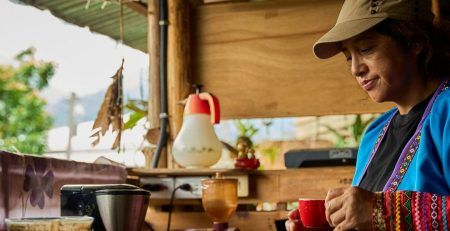You are probably no stranger to the UNESCO acronym and you can name some monuments in your area that are on this list. The abbreviation comes from the words “United Nations Educational, Scientific and Cultural Organization”. The organization was established after the Second World War (November 16, 1945) to protect peace and the heritage of humanity. The list of world heritage includes the old towns of historic cities, particularly important buildings, elements of natural heritage, as well as … food.

UNESCO: Food is culture
The idea of inscribing a country’s cuisine to UNESCO is quite new. The list includes two whole cuisines of the countries and many dishes and eating rituals. It is hard to believe that before 2010 no one recognized that food is an element of culture important enough to be given special attention and protection.
So far, the countries whose cuisine as a whole are on the list are France and Mexico (in particular the state of Michoacán). While the first country probably did not surprise anyone – France has long been famous for its cuisine, and cooks from around the world are educated there or undergo apprenticeships with local chefs, Mexico has aroused some controversy. Neighboring countries seemed a bit affected, Peruvians asked why it is not their cuisine, which is similar to Mexican. The organization itself explains its choice by writing that Mexico’s cuisine is “elaborate and symbol-laden,” and that it allows “express community identity, reinforce social bonds, and build stronger local, regional and national identities.”

Dishes and rituals
Of course, having a whole country’s cuisine listed on UNESCO is a great honor, but every single dish or food practice is hugely important. And so many more traditions made their way to the UNESCO list, including the whole ritual of brewing and serving coffee in Arab countries – from grinding beans, through roasting, grinding, brewing, to serving. The oldest or most important guest pours the first cup, only one-quarter full. It is customary to drink at least one but no more than three cups.
The UNESCO food list also includes the Korean art of pickling, kimchi. You can read more about it here. Kimchi can be prepared from many vegetables and fruits and eaten as a side dish or a meal full of vitamins. When it comes to Japanese cuisine, the washoku philosophy made it into the list. It is based on using fresh local products, preparing dishes in harmony with nature and the seasons of the year. The list honored also China’s tea culture, Singapore’s street food culture, and more.

In European culture, for example, the Neapolitan art of making pizza, Ukrainian borscht or truffle hunting in Italy became a part of the cultural heritage. Other examples from around the world include Ceebu Jën in Senegal or Joumou soup in Haiti.
We have to remember and carry on
Inscribing food on the UNESCO World Heritage List is a great step towards a brighter future. The method of preparing dishes carries a lot of information about a culture, its values and history. As humans, we also strongly emotionally attach to traditional meals. They are symbols of you childhood, families and homeland. Therefore, it is extremely important to cultivate culinary traditions and not forget about them among the new trends in gastronomy.
https://www.npr.org/sections/thetwo-way/2010/11/17/131391343/unesco-designates-traditional-french-and-mexican-cuisines-cultural-treasures
https://elpollonorteno.net/did-you-know-that-mexican-food-is-a-cultural-heritage-of-the-world/
https://en.wikipedia.org/wiki/World_Heritage_Site
https://www.outlookindia.com/outlooktraveller/explore/story/71989/culinary-traditions-that-have-been-recognised-as-an-intangible-heritage-by-unesco
https://wander-lush.org/food-culture-unesco/
https://www.kiwi.com/stories/pl/kulinarna-lista-niematerialnego-dziedzictwa-kulturowego-unesco/
https://ich.unesco.org/en/lists?term[]=vocabulary_thesaurus-10








